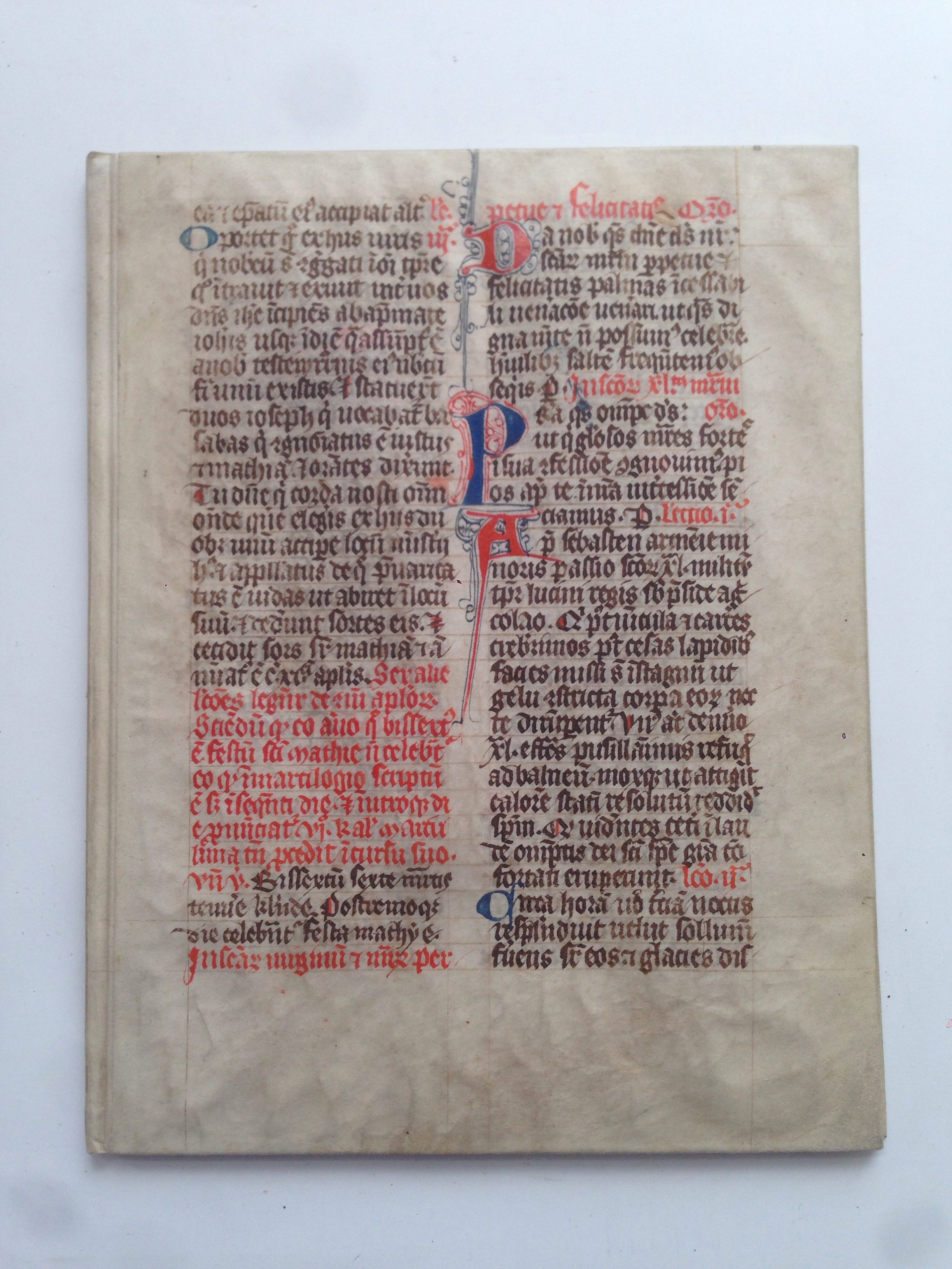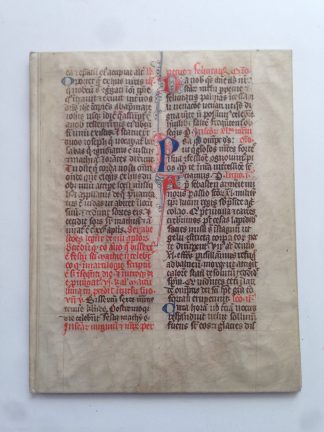WALTHER, Johann
BOUND IN A FIFTEENTH-CENTURY MANUSCRIPT
Epitaphium des Ehrwirdigen Herrn und Vaters Martini Luthers
Wittenberg, Georg Rhau, 1546£4,950.00
FIRST EDITION (?). 4o. 8 unnumbered leaves, A-B4. Large Gothic letter, in German. T-p with ¼ page woodcut portrait of Martin Luther in a roundel, ‘2’ in later red ink to top right corner. Fine ½ page woodcuts (after Lucas Cranach the Younger) of Frederick III Duke of Saxony with a sword and coats of arms, and Martin Luther dated 1546. Very good copy, light browning, the occasional marginal stain. Attractive binding from a C15 vellum manuscript on modern boards, probably German. Red and black large Gothic letter in Latin, double column, ruled in red, initials in red and blue, heightened in gold in places.
Crisp copy of a German poem written to commemorate the death of Martin Luther in 1546, when the volume was first printed in five impressions (no priority has been established). Johann Walther (or Walter) (1496–1570), the ‘father of Lutheran church music’, was composer and then director of the chapel choir of Frederick III, Duke of Saxony. In 1524, he published ‘Geistliches Gesangbuechleinin’, a hymnal for Lutheran choirs, with a foreword by Martin Luther himself; the ‘Deutsche Messe’ followed in 1527. For two decades, Walther worked incessantly with Luther to adapt Catholic church music to the needs of Lutheran liturgy, for instance, by introducing hymns into the mass and encouraging people to sing them at home and make them part of their everyday lives. The ‘Epitaphium’ is Walther’s tribute to a religious personality who had also become a close friend. The poem depicts Luther as a heroic figure whom Death cannot overpower and the Devil’s bite cannot hurt, a soul who has escaped from the hellish torments reserved to Papists to revive in the teachings of God’s word and the light of Christ. The fine woodcuts after Lucas Cranach the Younger immortalise Luther and Frederick III, one of the earliest defenders of Lutheranism and founder of the University of Wittenberg, where Luther taught.
The striking binding is made of two non-sequential leaves from the same manuscript in superb condition. It is probably a C15 German lectionary, with excerpts from the Acts of the Saints and Martyrs, associated with their calendar dates of worship. The front cover features passages from the acts of St Mathias (February 24) and the Forty Martyrs of Sebaste (March 10), while on the back are extracts from the lives of St Peter and Paul (including Acts 1:21-26 and 12:2-8), interspersed with orations.
USTC 651896; BM STC Ger. p. 581; VD 16; W 994. Not in Brunet or Graesse. See Strauss, The German Single-Leaf Woodcut, 1500-1550 II, 633, 635.In stock









